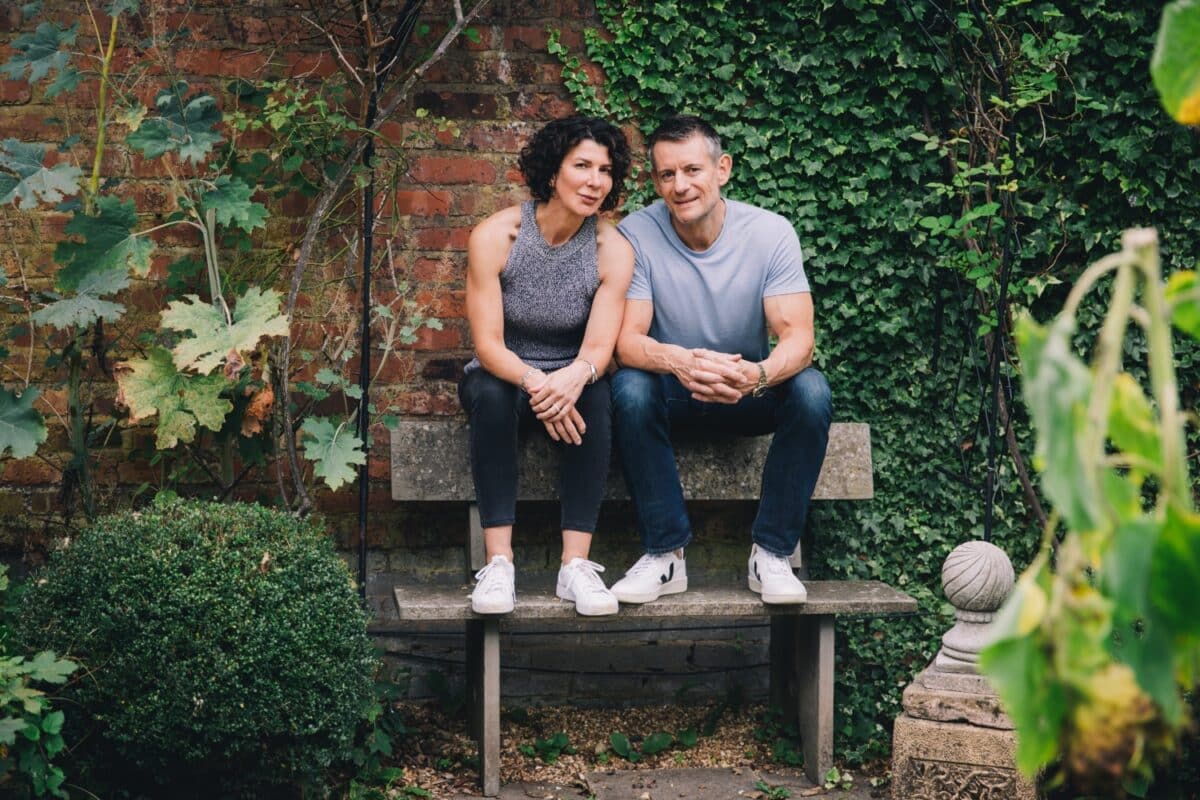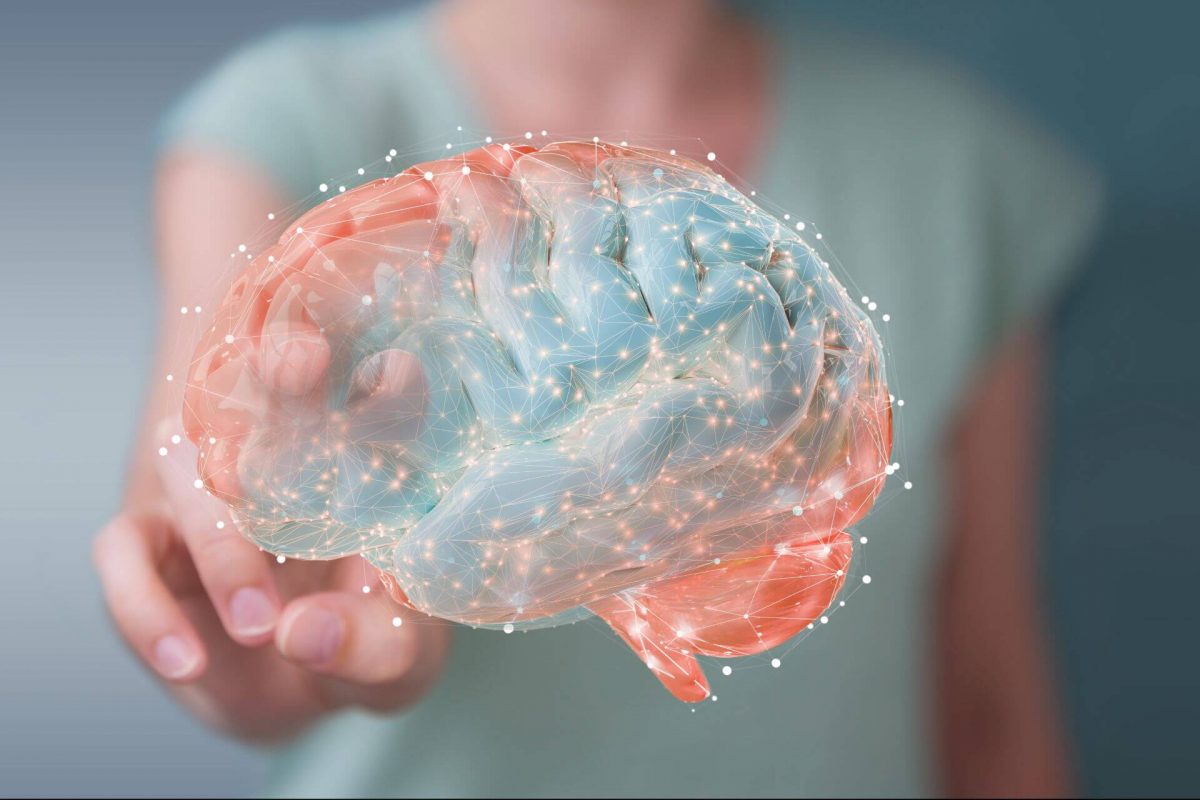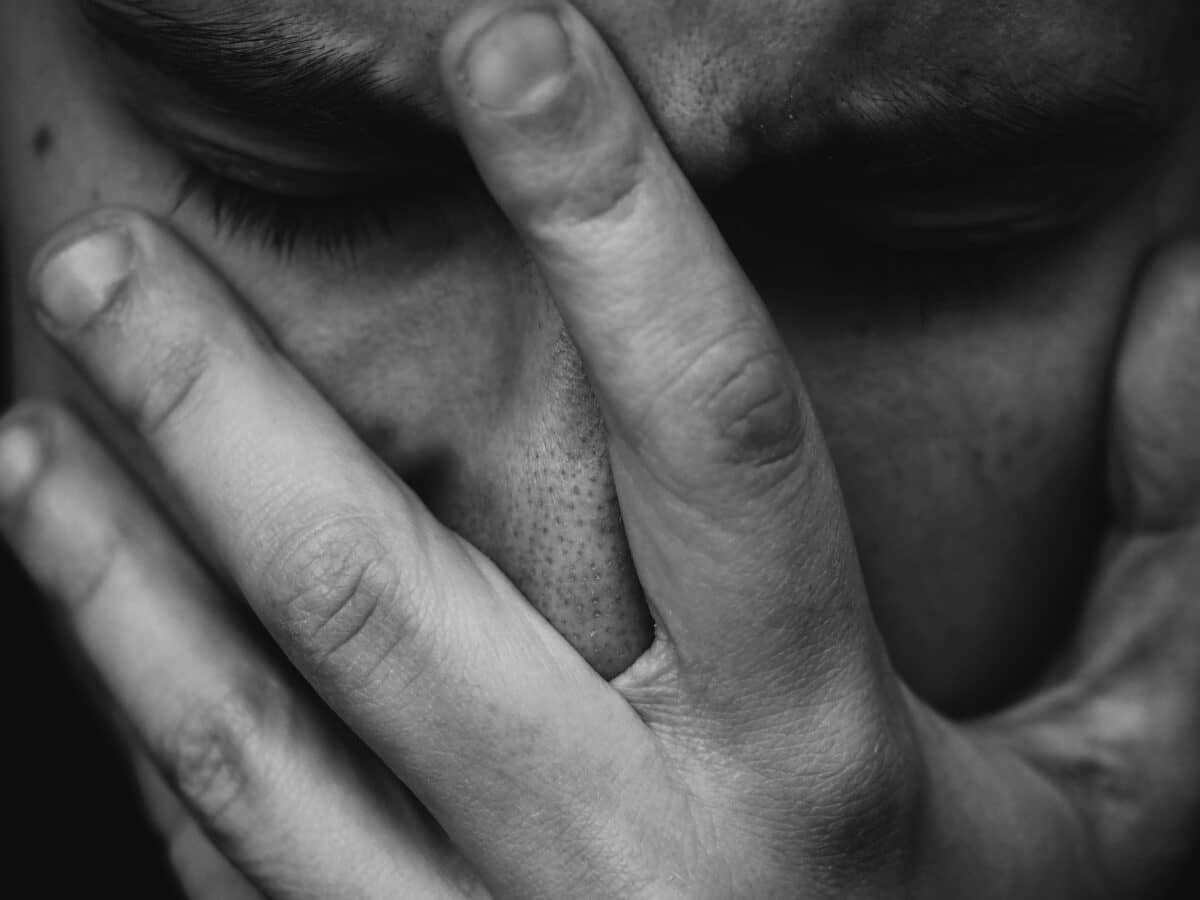White River Manor Pain Recovery Program
White River Manor is pleased to announce an exciting, new, and exclusive Pain Recovery Program, having recently forged a creative partnership with Dr Wayne Kampers MBChB LMCC MRCPsych.
Dr Kampers is a highly qualified and experienced consultant psychiatrist and diagnostic clinician who is an established expert in the treatment of chronic primary pain and a pioneer in the pain recovery landscape. Based in London on Harley Street.
He is also a well-established Mind, Body and Trauma-Informed expert. He is the founder of a successful and transformative online Pain Recovery Program, which he runs with his wife, Laura, a widely respected Pain Reprocessing Therapist and Mind-Body Coach.
Our local medical team at White River Manor, including our already highly skilled integrative consultant psychologists and therapists, will now also benefit from the couple’s decades of expertise and experience. Together we have created our new 12-week Pain Recovery Program.

Our approach
We recognise and understand that Chronic Primary Pain invariably has its origins in trauma, resulting in limbic system impairment. Our unique program aims to address this through a trauma-informed therapeutic and behavioural approach.
In the pain recovery program, we use neuroplastic-based therapies designed to retrain the limbic system; we help to create new healthy neuronal pathways to replace previously damaged functions. We employ dynamic neural and amygdala retraining to rewire the autonomic nervous system and calm the overactive nervous system.
Mind-Body-Spirit connection and restorative wellness are also key pillars of our approach. We encourage connecting with the shared energy and therapeutic healing power of the outdoors by integrating nature and wildlife into your healing journey.
This is a unique consultant-led Pain Recovery Program that is client-centric and evidence-based. It is highly structured in approach but also focused on individual needs.

How Our Pain Recovery Program Works
Your life-changing journey of recovery from chronic pain starts with a detailed and comprehensive diagnostic assessment by Dr Kampers. Then, during the first two weeks of the Pain Recovery Program, your recovery journey starts.
It begins with Dr Kampers and Laura, via Zoom, on the virtual platform, followed by six weeks of an intensive customised residential program at White River Manor. After that, there will be another four weeks of ongoing recovery on the virtual platform.
The whole process is focused on your therapeutic clinical care and will be overseen by expert clinicians and practitioners throughout.
With roots in two continents, we’ll be communicating and connected throughout your recovery journey. Continuity of care is ensured.
About Dr Kampers and Laura Kampers

Dr Kampers gained his MBChB medical qualifications from the University of Cape Town, South Africa. He also has a Medical Licentiate in Canada (LMCC).
He specialised in General and Elderly Care Psychiatry in the United Kingdom with a Membership from the Royal College of Psychiatry in London (MRCPsych).
Dr Kampers is also a member of the Royal Society of Medicine, the International Association for the Study of Pain (IASP), the World Institute of Pain and The British Pain Society. He is also a listed Diagnostic Clinician in the International Directory of the Psychophysiologic Disorders Association.
Dr Kampers will be a presenter at a key event on Chronic Primary Pain, as well as a key expert at an upcoming Restorative Wellness and Mental Health Retreat.
Laura is an experienced Pain Reprocessing Therapist and Integrative Mind-Body Coach who incorporates Mindset, Somatic and Intuitive Coaching methods in the Pain Recovery Program.
She is a firm believer in the intrinsic interaction between mind and body; her mindfulness philosophy and pain reprocessing training promotes the type of awareness where she shows her clients how to pay attention to their thoughts and feelings – teaching them how to process difficult and uncomfortable emotions and specifically those emotions that cause and perpetuate pain.
She helps her clients understand the unique connection between the mind and body and then shows them how to put into practice very specific tools and techniques which allow them to break the pain cycle they are locked into.
Laura’s unique coaching style and pain reprocessing therapy skills teach people how to not only decrease their pain but to heal their bodies through retraining their brains.
Understanding chronic pain
Chronic pain, now known as Chronic Primary Pain, describes any condition in which pain has lasted much longer than normally expected. This pain may or may not be associated with an injury, tissue damage or disease, or it could also persist long after tissues heal or any underlying disease has been treated (usually three to six months).
Unlike acute pain, with chronic pain, changes occur in how your nervous system interprets normal inputs or information. This is because your nervous system isn’t hard-wired – it’s capable of dynamic change.
Rewiring the brain
This capacity for constant change is known as neuroplasticity. This is a dynamic process of physiological (and physical) changes in our brains that occurs due to interactions with our environment.
Our brain forms new connections and pathways and alters existing circuits via structural remodelling in response to our changing needs.
Neuroplasticity is essential for normal brain development; it helps create functional brain circuits and is the basis of learning. This is why acquiring a new skill, such as speaking a language or playing a musical instrument, is much easier in childhood than in adulthood. Young brains are much better at learning and adaptation.


Neuroplasticity is an activity-driven process. Every thought, feeling or action we engage in triggers thousands of neurons that join together to form neural networks. Repeated patterns of behaviour become automatic, while interrupted patterns of behaviour can dissipate.
Your brain remembers your best efforts and makes small changes and incremental positive adjustments.
What is neuroplastic pain?
Neuroplastic pain is when pain symptoms are caused by learned neural pathways in the brain and not ongoing structural damage or disease in the body. This is also known as nociplastic pain or neural circuit pain.
The brain misinterprets signals from the body and, as a result, produces neuroplastic pain or other medically unexplainable symptoms.

Fear is often the driving force in ensuring that pain is amplified and maintained beyond normal healing time. This is because fear can trigger the learned neural networks associated with the past injury long after the actual injury has healed.
Neuroplastic pain can come in many forms. Typically they are:

How does neuroplastic pain develop?
There are four main ways that neuroplastic pain can begin to develop:
1) Ongoing pain after an injury has healed
Neuroplastic pain can begin with a structural injury. The majority of physical injuries heal within a few weeks or months, depending on your age. However, after an injury has healed, the brain still maintains the neural pathways associated with that pain. Fear can cause these sensations to continue beyond normal healing time.
General healing times are as follows:
- Skin healing, 2-4 weeks
- Muscle healing, 1-6 weeks
- Bone healing, 4-8 weeks
- Tendon healing, 8-10 weeks
- Ligament healing, 12-16 weeks
- Spinal discs, 80% heal within 6 months.
2) A belief that something is structurally wrong with the body
Fear or suspicion that something is wrong with the body is one of the primary causes of chronic pain. This fear can cause the symptoms to arise in the first place – or amplify or maintain them.
3) Any adverse, stressful, or traumatic experience from childhood onwards
Adversity, stress, or psychological and emotional trauma can activate the danger circuits in our brains. This, in turn, has the ability to create and maintain pain and other medically unexplained symptoms.
If you have a history of chronic stress, depression, anxiety, PTSD, or childhood adversity, this can make many physical conditions worse and lead to neuroplastic pain.
4) Having typical neuroplastic personality characteristics
Chronic pain can also arise with no obvious cause. This is called insidious neuroplastic pain.
People who experience this invariably share various common personality characteristics. They are often conscientious, people-pleasing, perfectionists who are prone to anxiety, low self-esteem, self-criticism and worrying. They place a lot of pressure on themselves, often holding themselves to extremely high standards. They try to accomplish too many things. They tend to be stoic and hold in or have difficulty opening up to people and expressing their true emotions.
Their brains are on high alert, and they feel (emotionally) in danger. And when the brain feels emotionally in danger, it can trigger and maintain physical pain and other medically unexplained symptoms.

How do I know if my pain is neuroplastic?
Sometimes it can be difficult to distinguish between structural pain and neuroplastic pain.
That said, there are a few clues and things to look out for in particular:
- Symptoms not related to any confirmed organ disease or structural damage (medically unexplained symptoms)
- If treatments you’ve been offered have only provided partial or temporary relief
- If, despite experiencing different persistent and troublesome symptoms and consulting multiple healthcare professionals, you haven’t yet received a clear diagnosis.
- Being told you have multiple food allergies or sensitivities, but the treatment offered has either not worked or worsened your symptoms.
- Being told your symptoms may be stress-related or “all in your head”.
Pain could be neuroplastic if your symptoms:
- Begin without any obvious trigger or cause.
- Persist long after an injury has healed (usually 6 – 12 weeks, but up to 6 months for spinal discs)
- Are in a symmetrical distribution pattern.
- Occur on one whole side of the body or occur on half of the face, head, or torso.
- Spread over time to different areas of the body.
- Radiate to the opposite side of the body or down a whole leg or arm.
- Occur in many different body parts (multiple symptoms) and have different characteristics (e.g., headache and bloating)
- Resemble tingling, electric shock, burning, numbness, heat or cold.
- Shift or migrate from one part of the body to another.
- Are more or less intense depending on the time of day, or occur when waking up or while asleep (variable intensity)
- Occur after, but not during, activity or exercise.
- Occur when thinking about them.
- Occur when stress levels increase, or heightened stress is anticipated.
- Are minimal or non-existent when you’re engaged in joyful or distracting activities.
- Are minimal or non-existent after some kind of therapy, such as massage, chiropractic, reiki, acupuncture etc. (placebo response)
- Are triggered by things that are not related to the actual symptom, such as foods, smells, sounds, light, computer screens, menstrual periods, changes in the weather etc.
- Arise by simply imagining engaging in the pain-triggering activity (bending over, turning the neck, sitting, or standing)
- Are triggered by light touch or innocuous stimuli, such as the wind or cold.
Assessing chronic pain
To assess chronic pain, we use a biopsychosocial model and the Diagnostic Core Principles of Mind Body Syndrome; our evaluation incorporates:
- A detailed chronology of the individual’s unexplained symptoms
- An analysis of whether symptoms improve following:
- Understanding and acceptance of a psychological explanation for the illness
- Treatment of psychosocial stresses
- Recognition and/or verbal expression of emotions linked to symptoms.
- A full comorbidity psychiatric assessment for any depression, anxiety, PTSD etc.
- A detailed trauma assessment
- A comprehensive Stress History
- An Adverse Childhood Experiences assessment
- An evaluation of any personality characteristics that may be a factor.


Our 12-week Pain Recovery Program: step by step
Initial assessment
Your 12-week Pain Recovery journey begins with a detailed and comprehensive diagnostic assessment by Dr Kampers. This takes place on a virtual platform via Zoom.
He uses a biopsychosocial model and the Diagnostic Core Principles of Mind Body Syndrome in his diagnostic assessment.
Because Chronic Primary Pain is a medical diagnosis applicable to persistent pain with no pathological abnormality explanation, Dr. Kampers reviews all medical investigations as part of your assessment.
His detailed Chronic Primary Pain Assessment incorporates a full Psychiatric Assessment to identify any co-occurring and/or comorbid conditions that may need to be treated as part of the program as well, such as depression, anxiety, or trauma.
His assessment includes a detailed stress, trauma, and Adverse Childhood Experiences assessment, identifying triggering and priming events, as well as any personality characteristics that may have influenced and maintained the chronic nature of your pain.


A closer look at your home life
The first two weeks of your program start with Laura via Zoom so that she can connect with you in real time. This allows her to gain first-hand insight into what’s happening, and how you are thinking in your day-to-day life. With her insight and experience she will guide and support and helps you navigate your struggles on your recovery journey.
Her initial work will focus on a Mindbody Psychoeducation approach to your pain, while Dr Kampers will incorporate Targeted Mindbody Neuroplastic Techniques into your daily routine. These specific strategies are designed to positively influence your mind and body’s response to your pain.
You will then take these into the rest of your 12-week program and hopefully indefinitely thereafter. These will be the building blocks for further personal growth.
Weekly virtual sessions
Laura’s weekly sessions with you throughout the entirety of the program will be via Zoom, including when you are at White River Manor for your six-week intensive residential pain recovery program.
Throughout, you will be given personalised tasks to work on between sessions.
Her transformative work with you will include:
Pain Reprocessing Therapy (PRT)
PRT is a new evidence-based approach for treating chronic pain and aims to rewire neural pathways in the brain to deactivate your pain.
Somatic and Emotional Processing Work
This employs the principles of Emotional Awareness and Expression Therapy (EAET) with education about the role of stress and emotions in your pain. It also explores the traumas and psychological conflicts driving your pain. It does so by helping you to express the trauma or stressor-related emotions that you have been avoiding or blocking (especially repressed anger, sadness, shame, and guilt). This process helps facilitate a balance between both assertiveness and healthy boundaries, and openness and closeness.
Coach-Directed Thought Work
Laura’s coach-directed thought work will help you gain perspective and understanding of what’s going on in your life. It will help you to see that the results you get in life – good or bad – are powered and created by your thinking model. Laura’s role is to help you understand that model so that you can make changes to it and begin living your life with intention, rather than being at the mercy of your circumstances. She will teach you tools, techniques, and concepts to help manage your life, personally and professionally, putting you in control of your behaviour and mood.
Six-week residential stay
The main part of this program will be your six-week residential stay at White River Manor.
Your stay at WRM will be highly structured with 12 one-on-one integrative sessions with a clinical psychologist and six sessions of Equine Therapy. The one-on-one sessions will focus on addressing any co-occurring and comorbid conditions.
The entirety of your stay will revolve around several experiential therapies, all geared towards rewiring your limbic system and improving your emotional regulation. These therapies involve actively engaging in activities and experiences that can facilitate emotional processing and healing.


They include:
- Art Facilitation Therapy (pottery, mosaic, macramé, painting, mandalas) and Music Therapy (using music and other forms of sound) as a way to express and process emotions. This can be helpful in increasing self-awareness and emotional regulation.
- Mindfulness-based stress reduction skills to increase your awareness of the present moment and reduce stress and pain.
- Guided imagery techniques, using visualisation and other mental imagery, to promote relaxation and further reduce pain.
- Various meditative therapies, including Interoception Labyrinth and Trataka Meditation.
- Lymphatic Massage Therapy, Movement Therapies and Therapeutic Breathing, which can all reset your limbic system.
Guided nature and mindfulness walks, complemented by Experiential Nature Therapy in the Kruger National Park and separate elephant and chimpanzee therapeutic connections.
Your return home.
Once you have completed the six weeks at WRM, you will return home to complete the final four weeks with Laura and Dr. Kampers.
This enables a smooth transition for you as you move through our continuum of care and reintegrate into your life back home.
With a solid foundation, you will feel confident continuing your pain recovery journey.
Contact us.
Please complete the form below, and one of the team members at White River Manor will be in touch.

